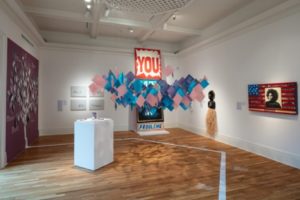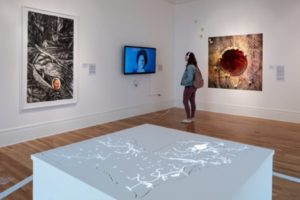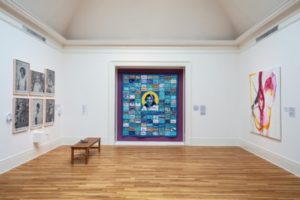As a Mellon fellow, I worked as a Curatorial Research Assistant on the exhibition Per(Sister): Incarcerated Women of Louisiana. To develop the exhibition, the Newcomb Art Museum partnered with formerly incarcerated women, community organizations, and others directly impacted by the carceral system in order to shine a light on the myriad issues pertaining to women and incarceration in Louisiana. I worked with museum staff and community partners to articulate the themes of the exhibition through original artworks, free and public programming, exhibition design that facilitated the active participation of visitors, and the printing of several publications as well as the website persister.info
As an art historian, I have always thought critically about how museums shape knowledge. As a community-engaged scholar, I have also always been aware of the perceived inaccessibility or irrelevance of art museums. Thus, a large part of my community-engaged scholarship considers how museums can become increasingly accessible, and meaningful, to widening sectors of the population. My work with the Newcomb Art Museum provided me with the opportunity to consider what it can look like when communities have their voices amplified and are brought into the creative process of exhibition building. It has also shown me how an art museum can exist as a space in which conversation is facilitated, collaborative relationships are established, and community sentiment is built.

Per(Sister) presented the personal and intimate stories, in their own voices, of thirty formerly incarcerated women. Each women was then paired with a visual or musical artist who created an original work inspired by their story. Pictured above is The Life Quilt, a collaboration between The Graduates, Black Masking Indians, Brandan “BMike” Odums, and Louise Mouton Johnson. The Life Quilt (2018) features the names of all 107 women who were serving life sentences in 2017.

Portraits of the Per(sisters) were shot by artist Allison Beondé and accompanied by audio of the women sharing their stories.

The galleries featured original musical compositions, visual works in a number of different media, as well as representations of data and concepts pertaining to incarceration by graphic artist Taslim van Hattum.

The floating envelopes were a way to facilitate dialogue between incarcerated women and the visitors to the exhibition. The pink envelopes held messages from visitors to the Per(sisters). The timeline that detailed the history of mass incarceration in the United States, and that wound throughout the exhibition, culminated in the tree seen here. The tree was populated by recent reform legislation passed in Louisiana. Further, blank “leaves” were made available so that visitors could write their own significant dates and add them to the tree.

This map, designed by the Tulane Architecture class “Creative Community Shaping,” illustrates the number and location of prisons, jails, and detention facilities in Louisiana, a state frequently called the “Prison Capital of the World.”

After Per(Sister) closed at the Newcomb Art Museum on July 6, 2019, it moved to the Diboll Gallery at the Tulane School of Public Health. On March 2, 2020, the show will move to New York City where it will be shown at The Ford Foundation Gallery.
